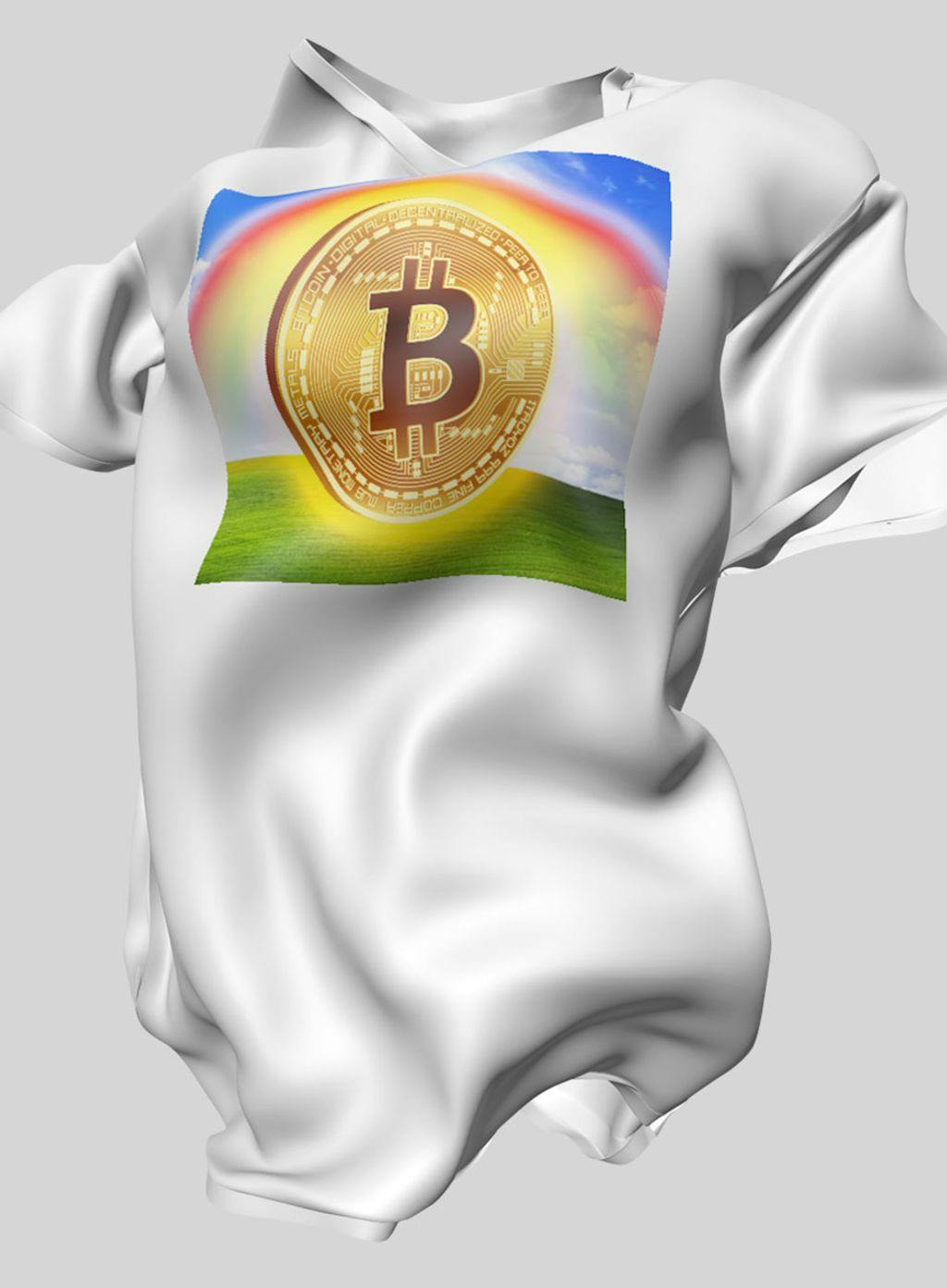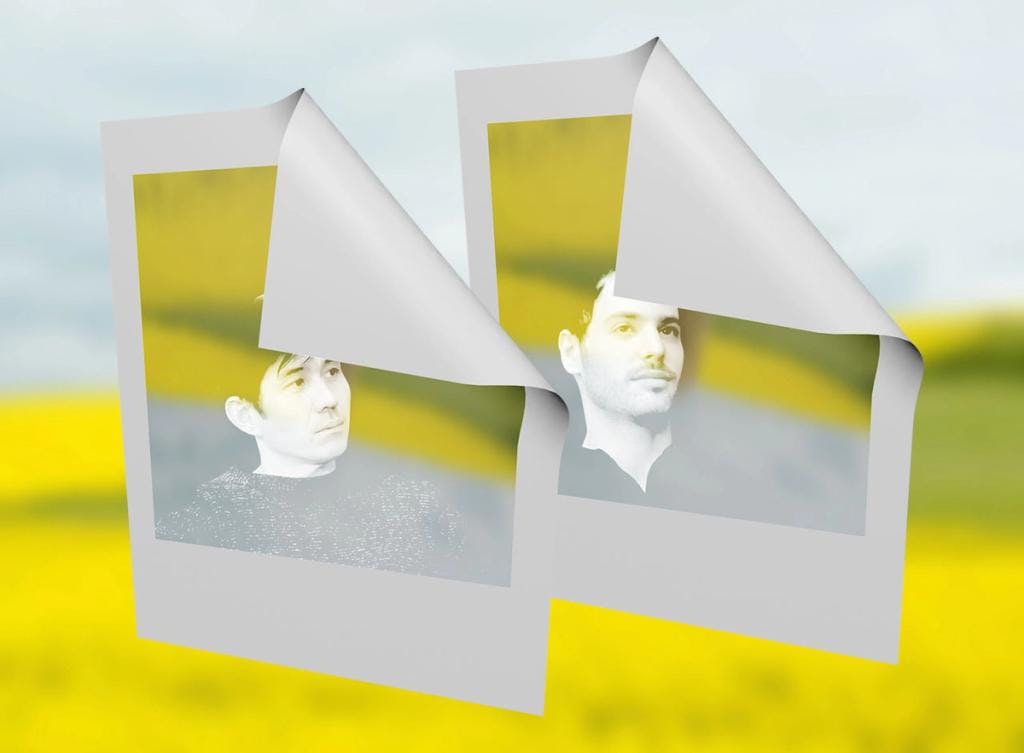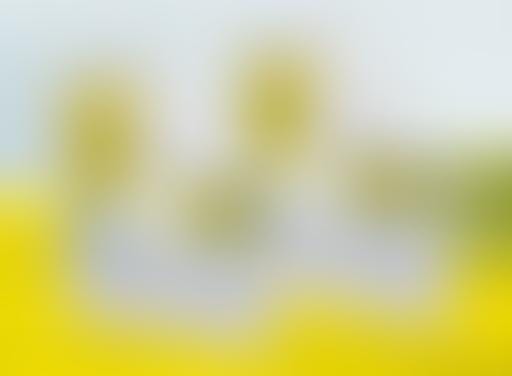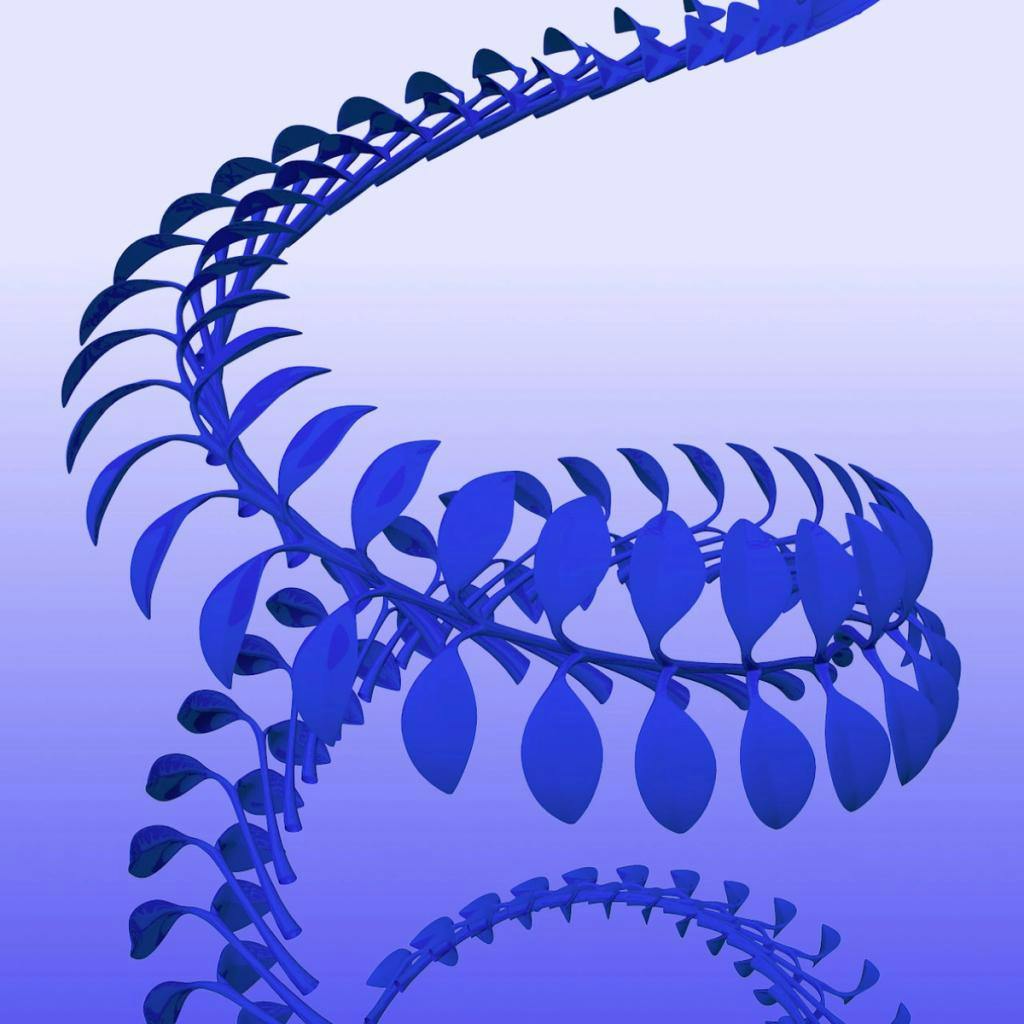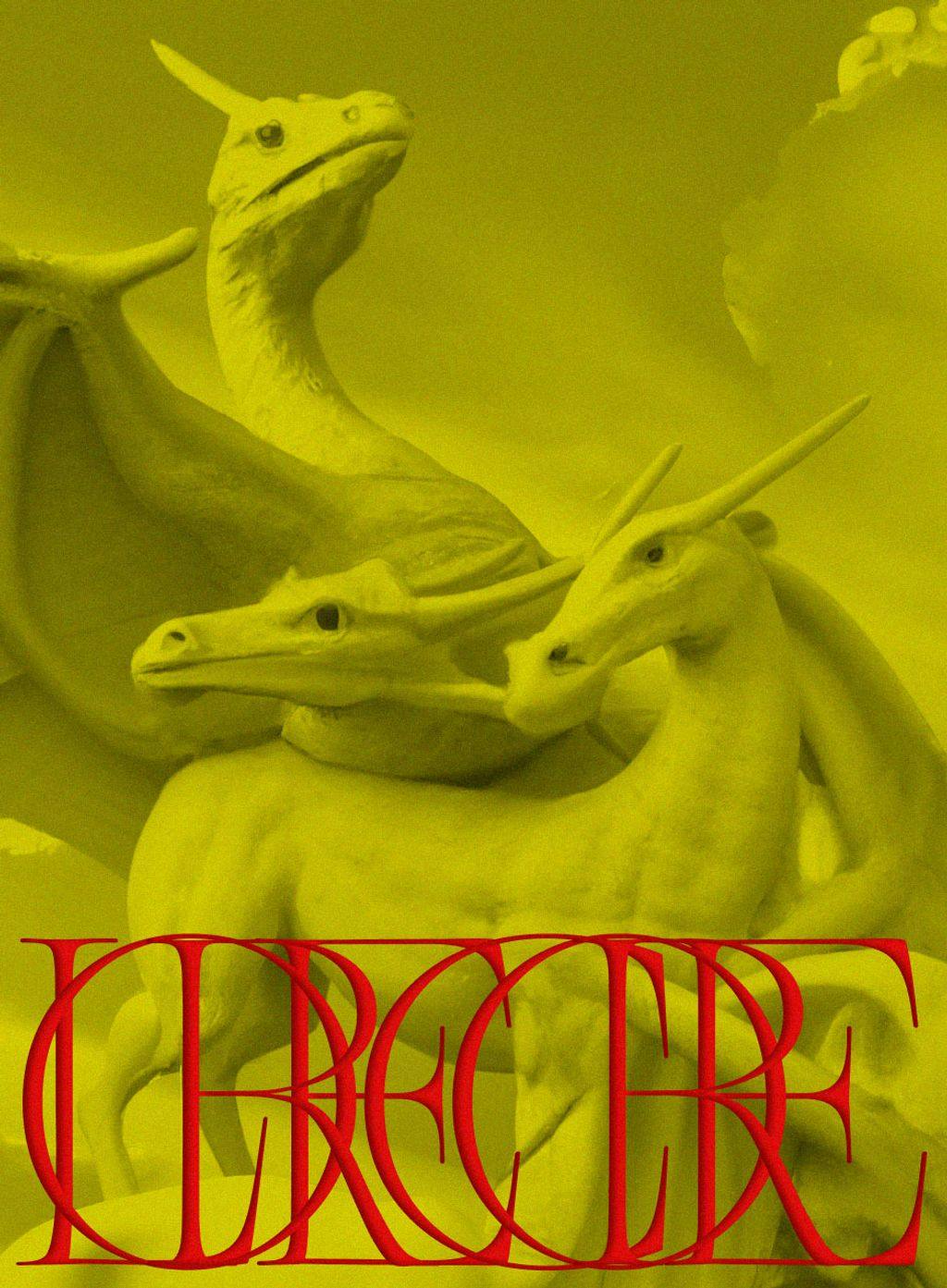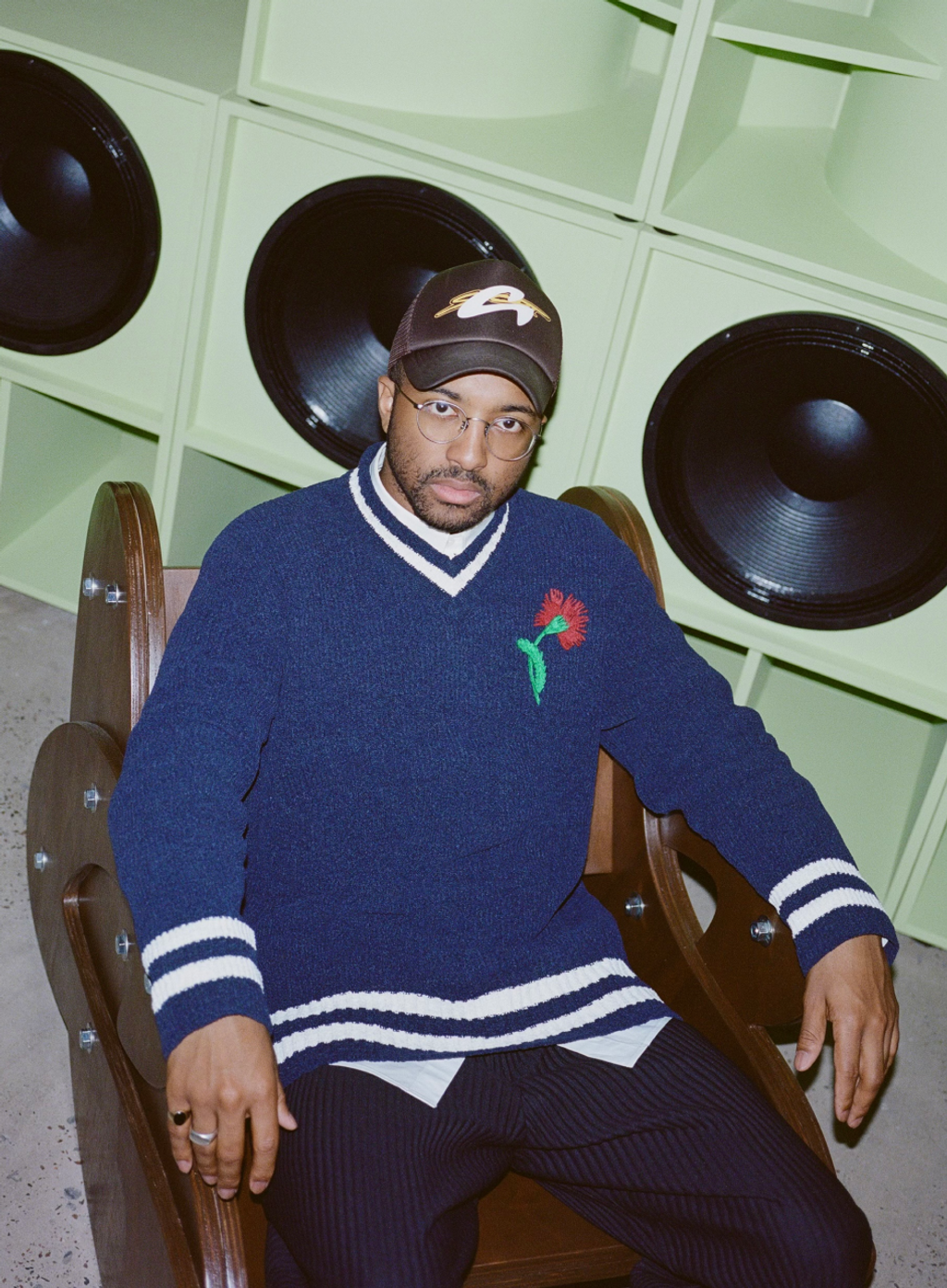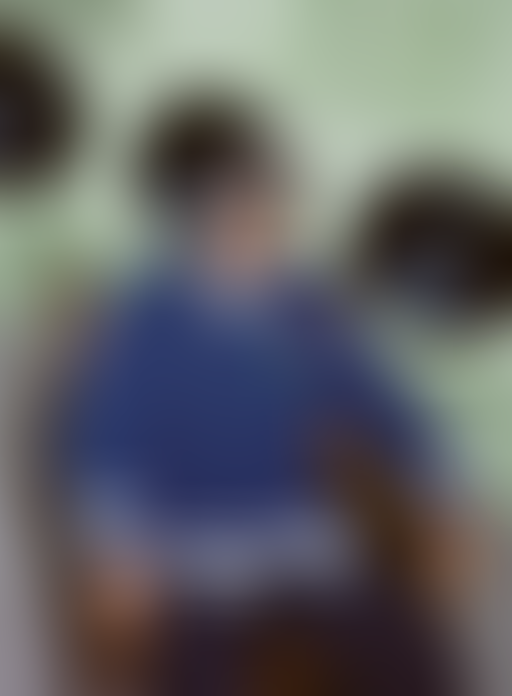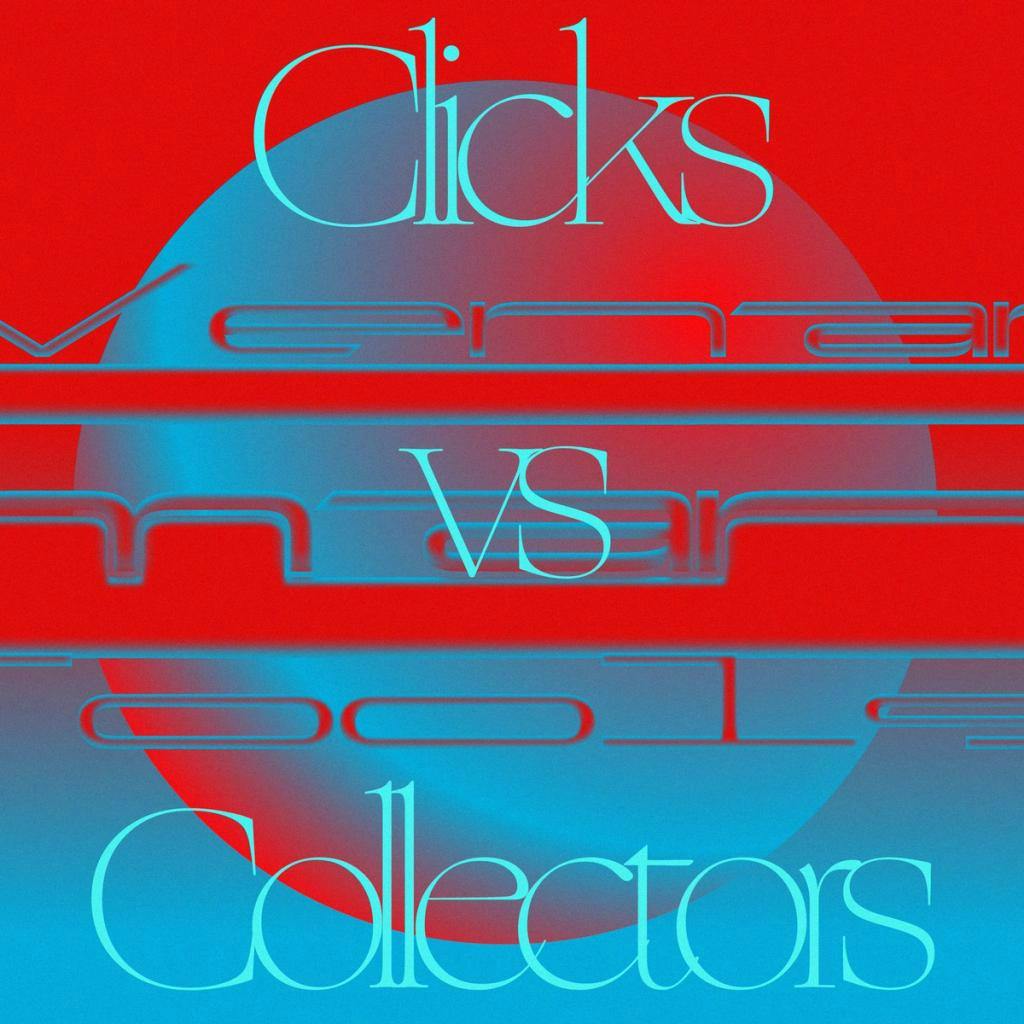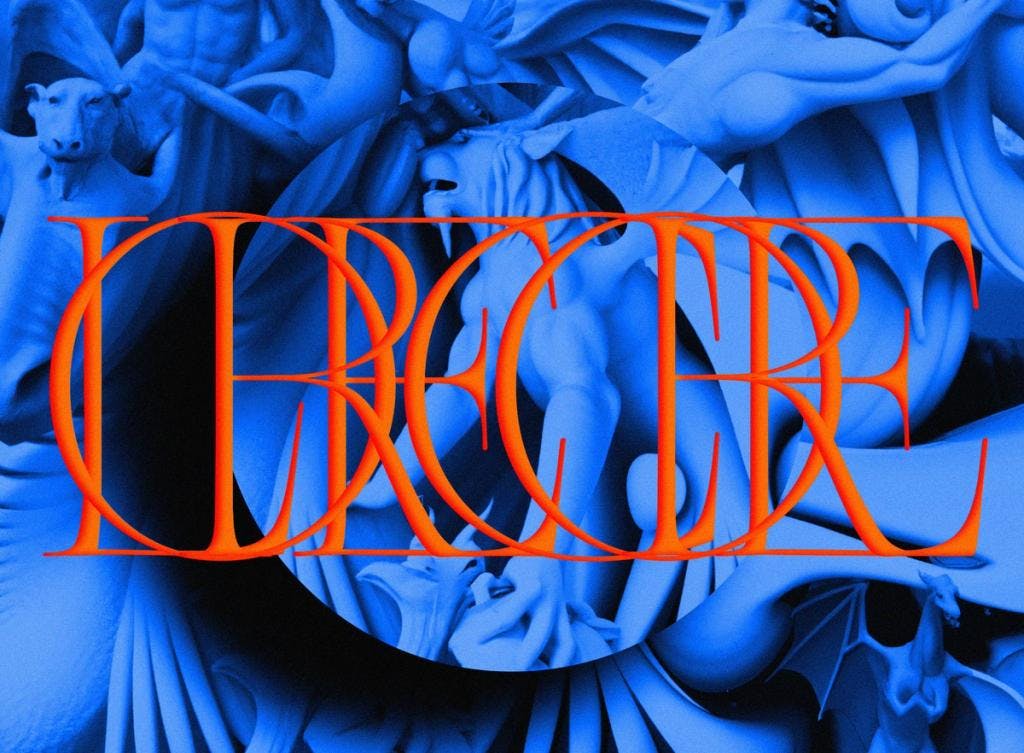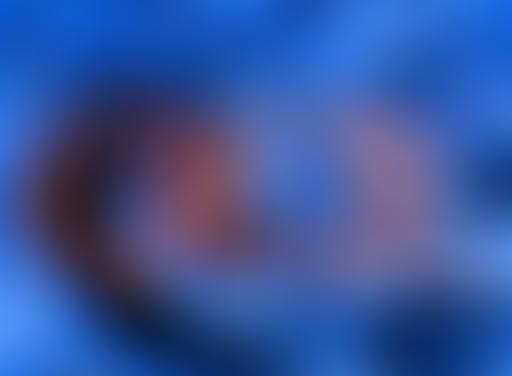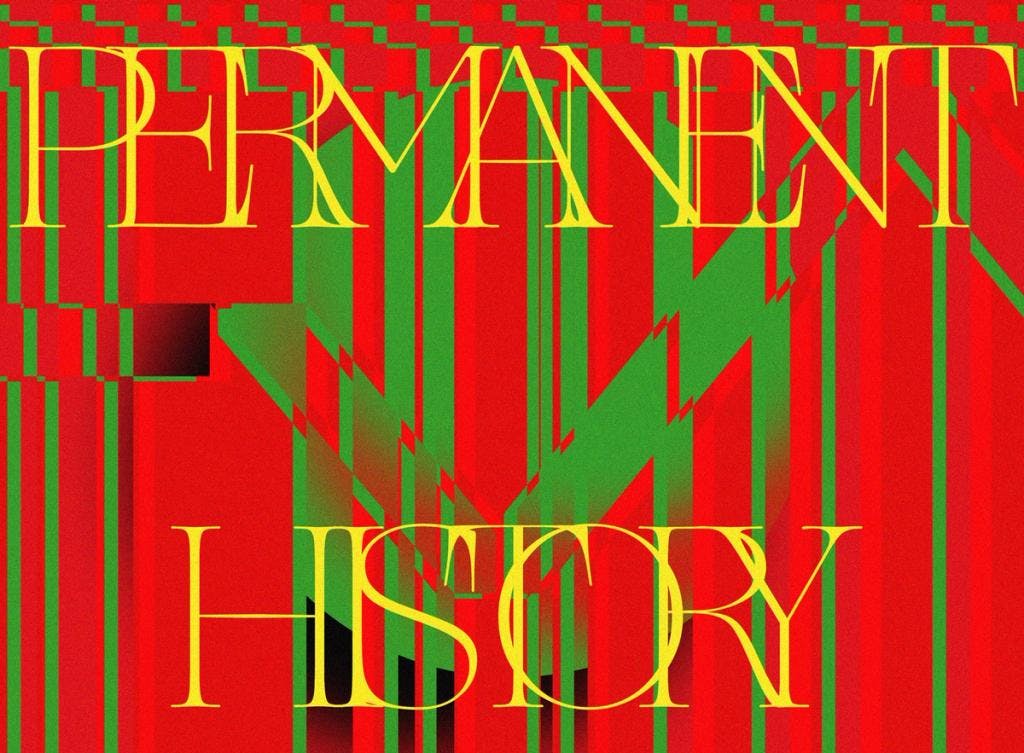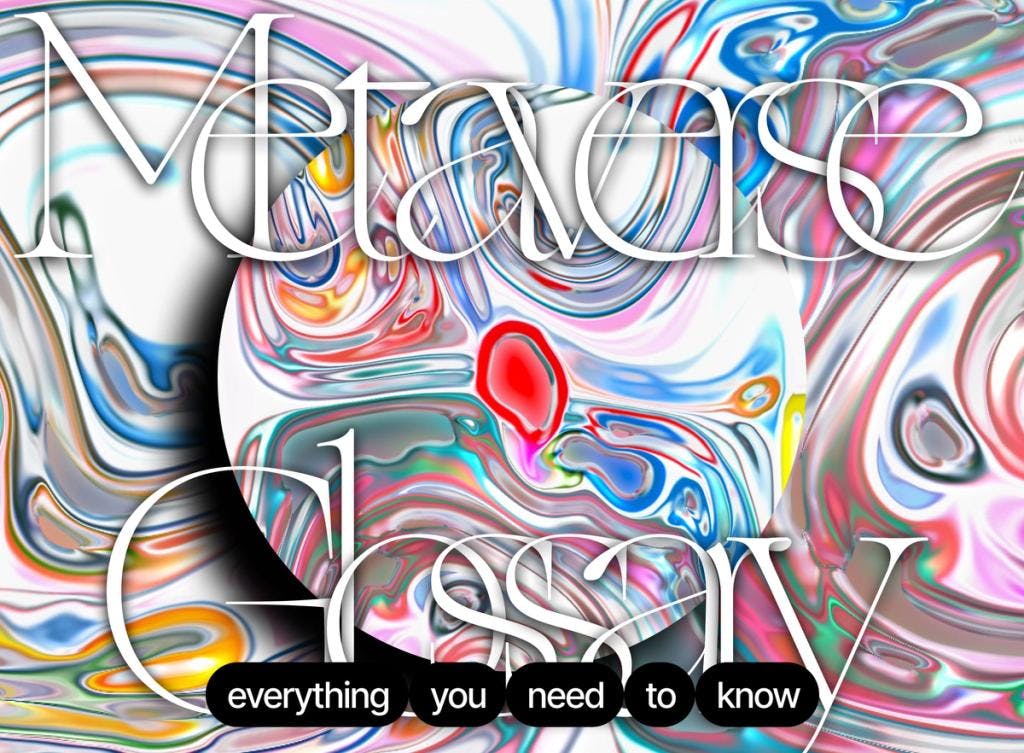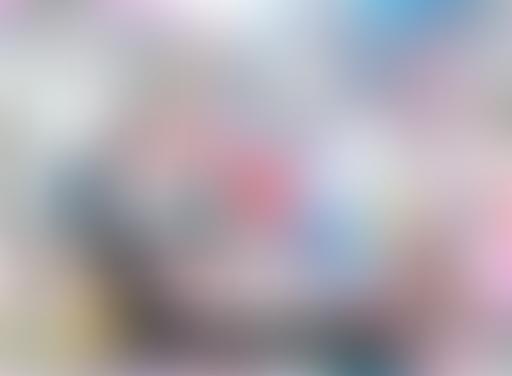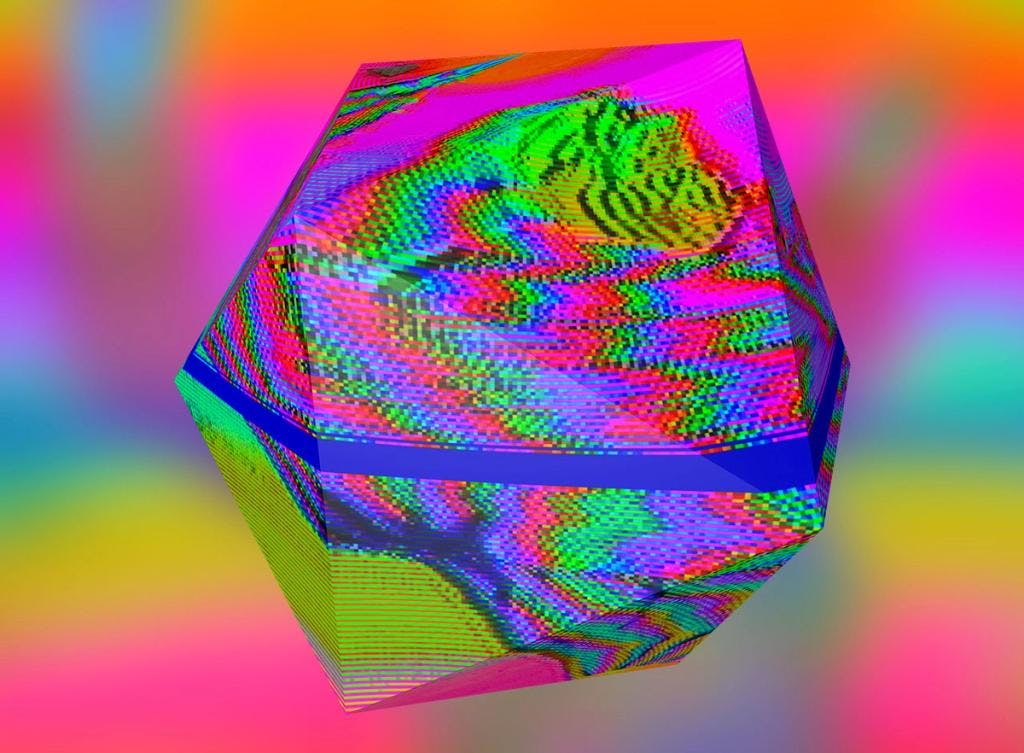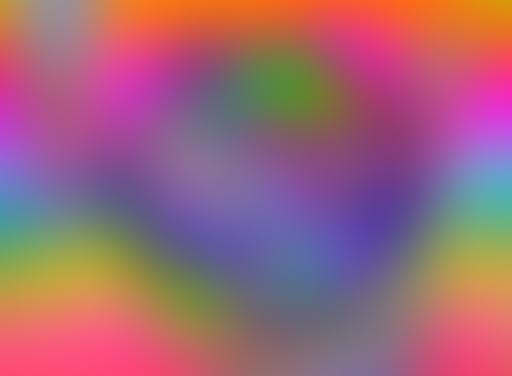


TheManyMultitudesofNiallAshley
The Many Multitudes of Niall Ashley
The Bristol-born, London-based painter and performance artist speaks on getting away with abstraction
Latashá Alcindor (ZORA): For the folks who don't know you, just tell us about yourself and where you're from.
Niall Ashley: Yo I’m Niall, I’m 23 years old, originally from Bristol now living in London. I’m a painter and performance artist examining the context of art and avatars in a social media landscape. I create metapaintings that iterate and inform each other from traditional mediums to digital, bending the rules of containers such as TikTok and Instagram.
LA: When was the first time you started making art?
NA: As a kid I used to love drawing with my brother. It was only until I went to school that it suddenly wasn't cool to be the artsy kid anymore. I don't know why. It's like, now you have to act bad. So I stopped drawing and I was just doing math and stuff in school. I had this job really young, I was in retail. And then I had this personal bank advisor job. I was just in this suit, and I was like, ‘Oh, god, this is not doing it for me.’ I felt I was selling my life away. I was thinking, I want to tap back into that side because I always felt that was my passion. I feel like life took the reins, because I had to start providing for myself. I didn't really think about what I wanted to do. I'd say I'd just started getting into making art through video editing to begin with at 18. I only started painting about two years ago.
LA: Only two years of painting? You're so incredible for just two years. That's insane.
NA: Well, thank you. You can get away with it when it's abstract.
LA: What do you mean by that?
NA: I'm not trying to say there's no skill to it. But I feel sometimes you could really get away with it, as long as you've got the expression. It's less so much about the technicalities. If you're expressing yourself in the right way and you're being really true to yourself, I think a lot of the time you can make good art. I think anyone can really make good art, as long as their head is in the right mindset.
LA: Can I know a little bit more about your background and all that good stuff?
NA: My mom is Jamaican and Scottish. She grew up in Scotland until I'd say 12 or 13. Then she moved to Bristol. And she was actually really in the jungle music scene. She was a singer, a really, really dope singer. I feel like she was supposed to be big, and then she had me.
LA: You spoke about your upbringing and having to go straight into work. I know that life because I'm also a Caribbean child, and the first thing was work before play. How did your upbringing bring you to this place where you thought that you had to be an artist?
NA: It was so hard for me. I had to work because I had to make money and I'm from a lower-class background. Since 16, I had to get rent in, and then from 18 I was living by myself. So I had to work but it was the worst. I know that sounds bad, but it felt like hell working, like a hole. Every single time I had a job, no matter how long I tried to stay in that position, I would always have some sort of mental break where I was like, 'yo, I can't keep sitting in this thing.' I feel like when you're in a lower socioeconomic background, literally all you're thinking about is the money aspect and nothing else; everything else becomes sidelined.
I always wanted to make stuff for myself, but maybe when coming from a Caribbean background, you try and it's like, where's the instantaneous value of that? I feel like art is always an investing thing. You might not see the jewels and reap what you sow right at the beginning, but it comes later on. And I think coming from those sides you always need to sort out the immediate situation. So it's like putting in rent now, getting food now. And I think that even gets you in a mindset of everything's just for the present. So I feel being a creative is quite hard, because you have to have faith to think. Even though I might be making paintings, selling zero of them at one point, having to invest any little money I get into the materials, and you're not seeing any return, you have to keep going.

LA: I think that's an important conversation of you breaking that within yourself and thinking, 'this is going to be bigger than this hard moment I might be having.'
NA: I think being homeless at one point really shows you. I feel like that rock bottom bit, having to be in hostels for five months and shit, really showed me. Being able to turn that around made me think anything's possible. So I feel okay to sit through the suffering more so now because I know there’s a light at the end of the tunnel. I'm thankful for my upbringing. I feel a lot of the time we forget the blessings of what we have. I definitely say now anytime when I'm feeling the heat, I try to be more aware of what's good right now. Say you get one or two commissions and think, "no one really likes my art," and you're comparing it to someone else, but they haven't had the trials and tribulations of your life. So when you're trying to compare, you don't see the big jumps you've made.
LA: What's your process at this moment?
NA: I've been a bit of a hermit these past two months because I've been learning all this 3D stuff. But I would say I've come to the understanding that I see painting as sort of the raw source material, a raw gem. And I see the making of the performance as adding more to the narrative. So usually with painting, it's quite an intuitive thing. I try not to add too much context to it right at the beginning. Then by the end of it, I add the context of that painting and I think how I can translate that in a performance or a metapainting sense. From there is when I feel like things get a bit more technical and a bit more 1's and 0's.
More of the work just before I got onto ZORA was on a political edge, it was an immediate response of, 'Oh, I want to respond to this thing.' But since February, it's been a really intuitive thing. With painting or sketching, or even in the music sense, laying stuff out helps you formulate the final idea. Sometimes you just got to kind of jam. And then you think, 'This is where we can take it.'
LA: Do you feel like your painting is very musical in that sense?
NA: Yeah, you're just jamming, you're playing, picking up different instruments and stuff. I'd say the instruments are like different materials, like oil sticks or spray paint. And then from there, once you do one hit, you'll see that maybe that could be a building here, or maybe this could be a character from what I've seen here. I try to add the context at the end. Obviously, I feel subconsciously there's always going to be things that come through anyway, but I want to let that be natural.
LA: Do you feel like a lot of your work is very cerebral?
NA: I would say it's a mix of intuitive expressive notion and then really critical thinking. I feel like I try to do those two polar opposites. I see the painting as sketching, because I think there are so many things you can get from painting. You know how if you scan the film, you've got infinite pixels? It's the same thing with paint. If I take one corner of one of my paintings, maybe that could be a skyline or one corner could be a pattern or image. So I feel like the painting is all these ideas, and then I slim it down when it comes to the performance part or adding the AR the 3D.
LA: For the performance art, how does that come into play? How do they work in tandem?
NA: I usually finish the painting, have a little breather for maybe a day, and then let it soak in. With the performance aspect, I think, 'What can I bring to the painting which you might have not seen if you had just seen the flat image?' So wherever there could be movement.
If I think about one of my last works, G Check, I call it Non-Binary Roadmap, but G Check. That one I asked, what are the polar opposites of what you call roads here in UK culture? And what do you think would make that image of roads uncomfortable? So I thought the most typical thing of femininity in the most simplistic sense is brought to clothing. And I thought, why not use a dress? So then I'm thinking if I pop out the dress, and wear it, and sort of become that character, you really see the absurdity of it and how silly that is. Because at the beginning you think this looks like maybe some rugged character, or maybe even place that image onto me, even though I'm non-binary, but a lot of people just see me as a Black male.
People who might not know so much about the culture would just implant that image onto you. And then once I wear this thing, it's all gone. I feel when I'm doing a performance, I'm trying to really show another narrative to the painting, which maybe might have been overlooked or maybe might have been a bit vague to begin with.
LA: Do you think being a Black non-binary artist speaks to that conversation of the body when you're creating your art?
NA: Maybe I'm a bit idealistic, but I like that I have avatars because you can get out of stereotypes with avatars. I feel that the annoying thing about being placed in some of our bodies is you're just instantly brought into all these stereotypes. And whether some of them are true, or some of them are not or whatever, it just feels like baggage. I'm just existing. Some think everything's political and yeah some things I want to be political, but I just exist. With the performance art aspect, I feel I usually want to become some sort of avatar or alias or figure from the painting to show how absurd it all is. Why do people cast these sorts of judgments?
Maybe I'm a bit idealistic, but I like that I have avatars because I feel like you can get out of stereotypes with avatars.
LA: Are you attempting to break social constructs when you create these pieces that connect with the performance art?
NA: I guess I'm just trying bend how you see people. I feel one thing I've really liked about understanding the non-binary experience more is we make so many immediate judgments of people, whether it be their gender, their socioeconomic class, what music they're into, and we just box so many people in. Although you could say non-binary is a box, you box so many people in. I like the idea of becoming these characters because you see this shedding of these ideas you have of the person, and you now see this really abstract figure, and when it comes to painting there are so many different interpretations. Something I wish was that life was a bit more like painting, where people really could see the multifaceted-ness of other people, rather than just immediately having all these judgments. That's what I like about the whole sort of metaverse, or avatars, which I feel like I'm going to kind of delve into more so now with my work: the idea that we can all be different characters at certain times.
LA: Let's get into that NFT talk. When did you start creating your first NFTs?
NA: February was when I dropped my first NFT. A lot of us in London were watching what was going on with the NFT scene. I'd heard about some of it by Clubhouse in December, when Clubhouse was really raw and unfiltered. The premise of collection works which only existed in digital space was really cool, but I didn't see many artists like you and me or I didn't see much artists with really lots of context or cultural context. Also I was seeing mostly digital native work, and because I knew I embodied traditional aspects, I thought maybe it's not my place. I don't want to take up space for artists who’s voices really benefited from the medium. Traditional works have always benefited from the appearance of elitism, lending to more provenance for purely the use of dated materials, which to be honest, I’ve never agreed with.
But then I saw Moyo make the jump, being one of the first London artists to adopt NFTs as a medium. And she started on ZORA. I saw Moyo as an artist who also morphs between mediums, and her jump being a beacon for all of us in London. I had a little bit of money left over from my university bursary and I was just like, 'Screw it, let’s pay for the gas, get a MetaMask, and take the risk!'
I dropped my first painting, and then after, my first performance piece. It was actually Jawn Diego that saw I had a video of my performance work on social media, and he was like, 'Why not mint the performance aspect of it as an NFT?' He collected my first real "metapainting," which really instilled some confidence in me. I saw my performances as art, but I didn't see it as collectable art. That moment was when I really started to reimagine my work. So I say, thank you to Jawn and Moyo, because I feel like they've changed my perspective and my direction of the practice.
LA: I think you're also one of the first artists that started doing performance art within ZORA. And I think that opened my mind up to seeing that I could start bringing my performance art into the space too. So I just want to commend you for that overall. What inspires your painting and your performance art?
NA: What inspires me is video games and painting as a child. And I would say the first artist I saw who really connected with me was 100-percent Jean-Michel Basquiat and Jamian Juliano-Villani, an Italian-American artist. She's really dope. Juliano-Villani would piece all these different fragments of dreams and memories, and I tried to look at my paintings not very linearly. There's no sort of perspective or encasing. Also, I’ve recently been inspired by Jennifer Packer, I saw her large works and a show at Serpentine Gallery.
I would say the streets of Bristol really inspire me. It's like this weird interlink between Banksy, Robert Del Naja, and Basquiat. They're all weirdly interlinked, because Robert Del Naja started painting in Bristol on the streets before I was born, and he took inspiration from Basquiat, and then Robert Del Naja inspired Banksy. Banksy saw Robert Del Naja on the streets, and then for me, I didn't even know about Basquiat until 18 or 19. So the first real art I saw was Banksy. I was growing up and there were certain murals you'd see in person.
Before, I used to think there's only really one painter I like deep down, which I'd say is Basquiat, he's my bread and butter painter. But then I realized that the thing I liked about Basquiat was actually the graffiti aspect. And it was that aspect that spoke to me, because it felt like the voice of the lower class. Class has always been an important driving force for me throughout my whole life, through everything, whether it be education, or just living, I felt it's always been fighting against a sort of adversity. It's just the graffiti that speaks to me. Now, I really see by my paintings that I'm forming things in a sort of one-liney, drippy, graffiti-esque aspect, and trying to bring that sort of grittiness back from Bristol.
LA: I would love to talk about how you’re intertwining video games with traditional art. How do you feel about the gaming aspect of NFTs and your art?
NA: It was the one escape I had as a kid. I really hate education, I would keep getting kicked out, so the solace for me was video games. Gaming really inspires me in the performance sense, the freedom of movement and expression, sort of becoming a character, I've always felt you can tap into these different video games. I feel in the future, realistically, you’ll probably have different Minecraft servers or something. We will all have these different, native worlds that our life exists in. And I feel that's probably why gaming sinks so well with the metaverse, because we're kind of rethinking the whole fragment, the whole shape of life and society, and especially identity.
LA: In your performance art, there's a sense of play, but seriousness too, right?
NA: That aspect is so important to me. And I feel maybe now we can do it, where it's not just conceptual. Finally even people like you and me can actually make a space where it feels more true to us, and where it feels more safe to us and feels like we can really be ourselves. I love the whole play aspect, it feels like second nature. I feel like I've always been sort of dreaming of being these different sorts of identities, but then as soon as I step out into the real world, it feels like you're putting on your suit and protective measures.
LA: I feel like a lot of your work in the past took purpose in political and human issues. But now that we're going into this NFT plane, I don't want to say we're trying to eliminate the human, but I wanted to know how you feel about the avatar versus the human and where you think we are right now?
NA: I think what we describe as human experience will be fractionalized in a more detailed and accurate way than ever before. We all are avatars in the outside world, but the mobility of those avatars are more restricted due to safety and assimilation. Whereas in the metaverse, I feel those concerns will be less intense. So rather than avatar putting what we describe as human at risk, I think it purely extends what we can imagine as human. More communities will have a home, like people whose bodies don’t align with their identity while their country restricts them from being themselves.

LA: I do believe that there is a sense of freedom that is happening for us, to allow us to be all of the things that we want to be. But then I question the hands of privilege and the folks who have that privilege and power to use those same avatars now without taking the time to really do the work in the sense of more people of color in the space.
NA: People can literally just wear the skin of someone they haven't had a shred of their experience with and they don't know the connotations that come with certain things.
LA: Exactly. That's what they did with hip hop. It's like this weird space we're in right now with appropriation and privilege and all of that. As for social media, how do you feel performance art connects to it as a whole?
NA: There's so much performance art every day, I feel like people don't realize. Facebook, Instagram, and Twitter are in this separate container. Say you were in a gallery space now, why can't a freaking tweet be in the gallery space? Everyday some people make some really great videos or something's actually really interesting. I feel that everything eventually will be able to be collected as art and I think that even the promise of that is if we have a space to show these things. A lot of the time, whether it be your clothing or your music taste, those are sort of things you collect, and then show it to people to be like, 'Oh, look, this is my album I've downloaded,' or 'This is my piece that I got from the vintage shop.' Loads of stuff on social media is performance art. We've become so accustomed to picking up the camera and performing in a way. Later down the line, all this sort of stuff is going to be looked at as gold. I think social media is performance art.
LA: Do you feel like you're channeling anyone when you create your work?
NA: I see myself, I don’t know. I just want to be as truthful as possible and show all the facets of my life. I remember this piece I did about all the times I was in police custody for example. I want to show everything, express everything. I'm just channeling myself and maybe I'm repping this a little bit for my mom, because I feel she didn't get to the place she was supposed to, and because of parasitic figures who didn't pay her the right thing, didn't cut her on deals. She doesn't have royalties for her music that have been played for time, tours, whatever. I feel like she was robbed. I do it for my mom because I feel like she literally had to lock off that whole side of her. It's just weird to see when I hear her sing, it's like suddenly this whole character comes out. Then as soon as she stops singing it's like, 'Okay, back to reality,' or 'I need to make rent or whatever.'
LA: I often feel like we're other dimensions of our parents.
NA: I hear that. If you look on a mathematical level you can't create or destroy energy, so yeah, I agree.
LA: Being in the NFT space, what do you imagine for yourself in the next five years or so?
NA: I really want to keep growing with the medium. I don’t want to have my art just persist with the money aspect. I feel a lot of the time, NFTs have been branded as this quick money-flip type thing. But I really looked at it as the sort of work you can put on there, say performance art, no one could ever collect performance art before. I feel like it's given space for that. I really just want to keep delving into what can be art, push the boundaries of what can be art, make things as meta as possible, and really go deep into this avatar space. But what I’m really inspired by now is making a video games in the NFT space, taking these paintings and showing the whole world these different dimensions of it to the point where it's almost like watching a series, or a short film, or a game. Because I feel like with gaming, you don't even have to play it, you can just watch it. I want to make a 3D world out of painting. So what's next for me is feeling more comfortable with 3D, rather than being scared of it, because it wasn't as scary as I thought.
